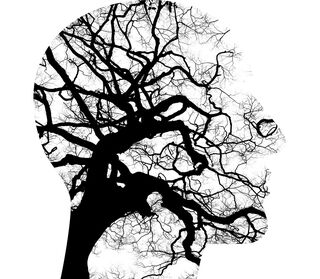Psychiatry
The Aims of Psychotherapy
The primary aim of psychotherapy is treating mental disorder.
Posted July 4, 2021 Reviewed by Gary Drevitch
Key points
- In its first decades of practice, psychotherapy was viewed primarily as a means of treating psychiatric illness.
- In recent years, more practitioners have seen psychotherapy as a way to help clients reach goals like personal growth and self-improvement.
- New research has provided evidence of psychotherapy's effectiveness as a biological treatment, and in fact as a treatment of choice.
These other enterprises, as worthy (and lucrative) as they may be, distract us from psychotherapy's main goal: the alleviation of the human suffering caused by mental illness. What we are left with is a psychotherapy that works for the rich and healthy, not the sick and disabled (Ruffalo, 2021).
For the vast majority of the 20th century, psychotherapy was viewed as a form of treatment for psychiatric illness. It was considered in very much the same regard as other treatments, such as medication and electroconvulsive therapy. In the United States, the practice of psychoanalysis was limited to physicians; psychotherapy, too, was practiced mainly by psychiatrists and also psychiatric social workers, until it was adopted by the fields of psychology and counseling in the years following the Second World War.

In the 1940s and 50s, a host of psychoanalytic theorists began to apply the concepts of psychotherapy to the treatment of severe mental diseases, such as schizophrenia. These psychiatrists included, among others, Harry Stack Sullivan, Frieda Fromm-Reichmann, and Silvano Arieti. By 1960, virtually every major position in American psychiatry was filled by a psychoanalyst (Lieberman, 2015). Without question, psychotherapy, at this point, was a medical treatment for psychiatric disease.
Beginning in the latter stages of the 20th century, and continuing into the first few decades of the current century, there has been a shift in the way psychotherapy is conceptualized and taught. To some, psychotherapy is only partially aimed at treating mental illness. To others, its practice is totally unrelated to psychopathology and instead an exercise in personal growth, self-improvement, or existentialism. Various fields unrelated to treating mental illness have emerged: marital, family, and relationship therapy; positive psychology; career and corporate counseling (for those who wish to climb the job ladder); and, most recently, "life coaching."
Graduate programs in social work, for instance, may devote little coursework to psychopathology. Internship sites may be located in a variety of nonclinical settings. Some graduating mental health professionals have had little to no exposure to patients with severe psychiatric illness. In just a few decades, psychotherapy has been transformed from a widely recognized form of psychiatric treatment to an endeavor that is viewed as only peripherally related to the treatment of psychiatric disorder.
What Is Psychotherapy?
The Oxford English Dictionary (OED) (n.d.) defines psychotherapy as "The treatment of disorders of the mind or personality by psychological methods...." Similarly, the American Psychological Association (APA) (n.d.) defines psychotherapy as "…any psychological service provided by a trained professional that primarily uses forms of communication and interaction to assess, diagnose, and treat [emphasis added] dysfunctional emotional reactions, ways of thinking, and behavior patterns."
Thus, both the OED and the APA make it clear that psychotherapy involves the treatment of mental disorders, or at least "dysfunctional" states. Even if we are to expand the meaning of "dysfunctional" to include psychological problems that do not map onto DSM-defined mental disorders, psychotherapy is still treating something—problems existing within the individual human being.
On this issue, I am in agreement with Shedler (2021), who often points out that the goal of psychotherapy is to change something problematic within or about a person; it is not a "balm and salve." That is, psychotherapy treats the individual and his or her mental disorder or dysfunction. Any application of the concept of psychotherapy to endeavors unrelated to treatment of disorder or dysfunction is, by definition, not psychotherapy but a corruption of it.
Some might take issue with the idea that psychotherapy is primarily a form of treatment for mental disorders on the basis that it can also be helpful for a variety of "problems in living" (to borrow Szasz's term). For instance, psychotherapy may be helpful in understanding why a person has repeatedly failed to sustain stable, long-term relationships. I agree that psychotherapy is of benefit in these cases; however, these patients often do suffer from some dysfunction and, in at least a broad sense, may be considered to be "disordered" (dis-ordered). Thus, in these types of cases, psychotherapy is still treating something within the individual.
Nor does it follow from psychotherapy's effectiveness in these cases that psychotherapy is not primarily intended to treat psychiatric disorder. As I have argued elsewhere (Ruffalo, 2021), psychotherapy has been since the age of Freud applied as a treatment for the mentally ill. In fact, many of Freud's own cases were of individuals with severe mental disorder.
Psychotherapy in the Biological Age
While the first effective psychiatric medications were discovered in the 1940s and 50s, it was not until the 1980s that biological theories of mental disorder gained widespread popularity. The 1990s was declared the "Decade of the Brain," and the development of the first serotonin reuptake inhibitors prompted the pharmaceutical companies to proclaim that mental disorders are caused by a known "chemical imbalance" in the brain. [Incidentally, academic American psychiatry never endorsed the chemical imbalance theory (see Pies, 2019).]
As a result, the status of psychotherapy fell, and it came to be seen as an intervention of secondary or tertiary importance in psychiatry. If mental disorders are biological (brain) diseases, then their treatment should be biologically-based. Psychotherapy, especially psychodynamic and insight-oriented forms of it, did not fit neatly into this new paradigm. This changing landscape, along with decreased reimbursement rates for psychotherapy, led, in part, to a reformulation of therapy as an endeavor only peripherally related to the treatment of mental illness.
As it turns out, psychotherapy is a biological treatment, at least in terms of its effects on the brain, which have been demonstrated in a number of studies on the treatment of various mental disorders (see Cozolino, 2017). Regardless of how one conceptualizes psychotherapy, one thing is certain: It remains one of psychiatry's most effective treatments.
Conclusion
From its birth in the 1890s, psychotherapy has been primarily a form of treatment for psychiatric disorder. It was practiced mainly by psychiatrists and psychiatric social workers until the second half of the 20th century, when its use broadened to include a whole range of activities unrelated to the treatment of psychopathology. I contend that insofar as these other ventures do not attempt to treat disordered or dysfunctional aspects of the individual human being, they are not psychotherapy.
Psychotherapy is among the most effective treatments in all of psychiatry, and it is the treatment of choice for numerous mental disorders, such as the personality disorders, posttraumatic stress disorder, and mild or moderate depressive disorder. It also plays a useful role in the treatment of more severe illnesses. Despite its more recent application to issues unrelated to psychopathology, psychotherapy remains chiefly a method of psychiatric treatment.
References
American Psychological Association. (n.d.). Psychotherapy. In APA dictionary of psychology. Retrieved June 20, 2021, from https://dictionary.apa.org/psychotherapy
Cozolino, L. (2017). The neuroscience of psychotherapy: Healing the social brain. (4th ed.). Norton.
Lieberman, J. (2015). Shrinks: The untold story of psychiatry. Little, Brown Spark.
Oxford English Dictionary. (n.d.). Psychotherapy. In Oxford English Dictionary. Retrieved May 23, 2015.
Pies, R. W. (2019). Debunking the two chemical imbalance myths, again. Psychiatric Times. https://www.psychiatrictimes.com/view/debunking-two-chemical-imbalance-…
Ruffalo, M. L. (2021). Psychotherapy as a medical treatment. Psychiatric Times. https://www.psychiatrictimes.com/view/psychotherapy-as-a-medical-treatm…
Shedler, J. [@JonathanShedler]. (2021, June 3). I do take it seriously. That's why I keep saying the purpose of psychotherapy is psychological *change.* It's not a [Tweet]. Twitter. https://twitter.com/JonathanShedler/status/1400323880988729344




